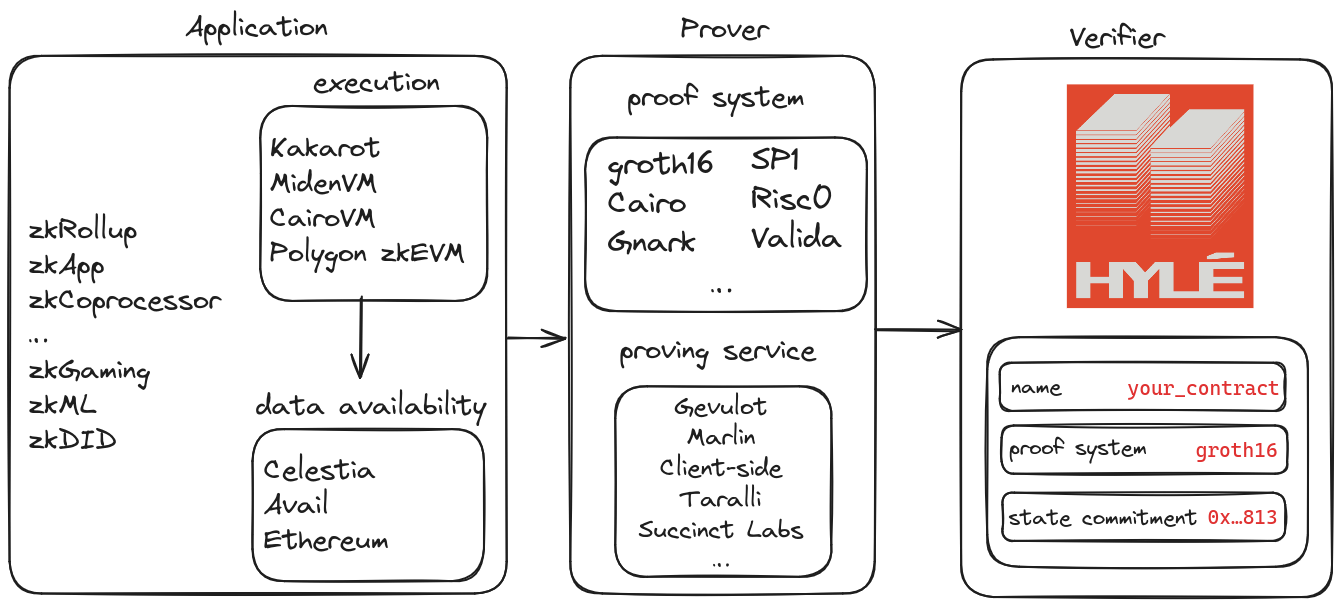About Hylé
Hylé is a lean blockchain that helps you build provable applications that are minimally, yet sufficiently, onchain.
Why Hylé?
- Leverage the power of zero-knowledge proofs for maximum trustlessness and privacy
- Run complex logic in your smart contracts thanks to off-chain execution
- Lower your storage costs with efficient and trustless storage proofs
- Enjoy better readability with our native on-chain Name System
- Freely create transactions composing private and public inputs
You can execute your smart contracts off-chain anywhere you like, on a rollup, on-premise or even client-side.
You can store your data securely in your backend, IPFS, Arweave or any other long-term solution: Hylé provides the verifiable source of truth for your end user.
You can choose your proving scheme, your language, your prover, and still get instant finality and enhanced security.
How does it work?

Using Hylé’s sovereign verification-focused Layer 1, here’s what happens:
- No need for a verifier contract: just call the native function.
- Proof generation: off-chain, the prover generates a zero-knowledge proof of a specific computation.
- Proof submission: the prover sends the proof(s) and the results of the computation to Hylé's Layer 1 as part of a transaction. If there are several proofs, that's not a problem: we offer proof composability.
- Delayed proving: the state is updated temporarily to remove proving time from your app's critical path. Read more on our blog.
- Verification: Hylé validators receive the transaction. They use the native verification programs to check the validity of the proof as fast as possible, without being limited by the bulky virtual machine.
- Consensus and block inclusion: if the proof is valid, the block producer puts the results of the computation on the Hylé blockchain and the state is updated onchain.
And that’s it.
With this system, execution and storage happen anywhere you like, without cost barriers. You only need a fast and trustworthy verifier: that’s Hylé.
For more information, check out our website.
